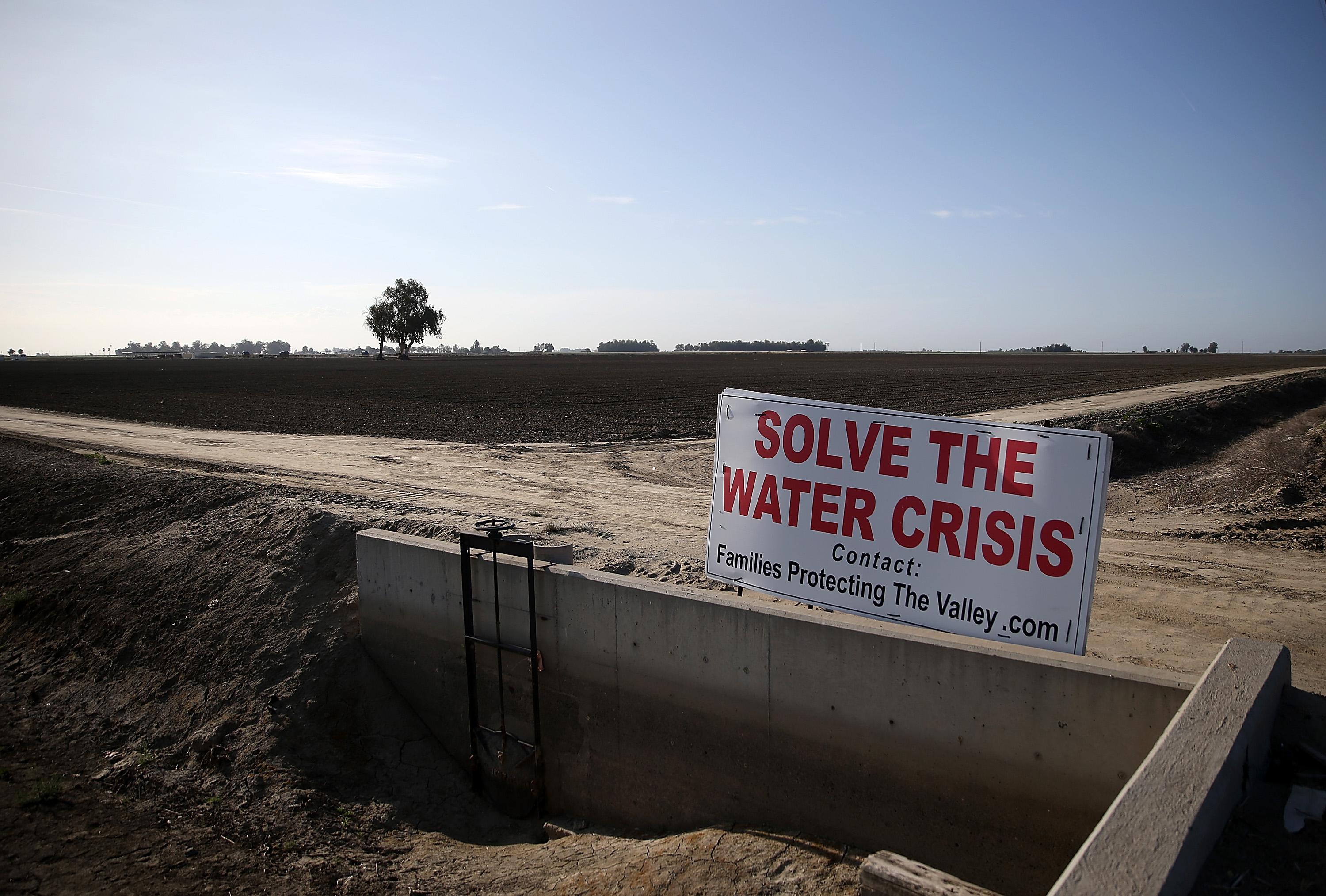The Associated Press reports that California will move on Friday to restrict century-old water rights in the agriculturally focused Central Valley, a step considered by many to be unthinkable as recently as last year.
Regulators said the first orders Friday will affect those holding century-old water rights in the watershed of the San Joaquin River, which runs from the Sierra Nevada mountains to San Francisco Bay and is one of the main water sources for farms and communities.
In April, prompted to action by a record-low snowpack, the state issued a mandatory 25 percent restriction in urban water use. Gov. Jerry Brown was criticized then for largely ignoring water use by farmers, who use about 80 percent of the state’s water each year. But Friday’s move is groundbreaking in California’s long struggle to reform its unique system of water rights. Many affected farmers paid a premium for land with senior water rights, with the understanding they’d never be cut off. They invested in high-value orchards that require water year-round, with that same understanding in mind. Now that’s all about to change.
Felicia Marcus, the chairwoman of the state Water Resources Control Board, announced the decision at a public meeting Wednesday. “It’s about figuring out how to make terrible choices in the most fair and equitable way possible,” she said. The affected farmers have already vowed to challenge the decision in court, saying any restriction of senior rights amounts to a “water war.”
Should the cuts go through, there will likely be a modest increase in the price of food grown in California as farmers will rely more heavily on relatively more expensive groundwater pumping in an attempt to preserve higher-value tree crops, like almonds, which require more water per acre and can’t be fallowed. More cuts could still be on the way, too: The Water Resources Control Board says that essentially all water rights statewide are up for review this year, regardless of seniority.
The drought, California’s worst in a millennium, is starting to feel more and more like an emergency. And what’s becoming increasingly clear is that California’s water use will never again be the same. “This crisis is an opportunity to accelerate what we know we are going to have to do under climate change anyway,” Marcus said in April.
In California, water rights are legally determined essentially by who arrived at the river first, meaning families with gold rush-era lineage have long been protected, even during exceptionally dry years. The only other time senior water rights were restricted was during the state’s previously worst drought on record, in 1977, and even then only for a subset of users on the Sacramento River. As far as anyone can recall, senior rights have never been curtailed on the San Joaquin.
A lot has changed since 1977. California now supports 16 million more people, and a vast industrialized agriculture system worth $50 billion per year. And then there’s climate change. A recent study showed that a multiyear “megadrought” is increasingly likely to affect California for years to come due to rising temperatures and increasingly erratic rainfall as a result of global warming. It may already be underway.
In an interesting and unexpected twist, some farmers holding senior riparian rights in the north-to-south flowing Sacramento River—meaning their land is directly adjacent to the river—have offered the state a deal: They’ll voluntarily fallow 25 percent of their land (or make an equivalent 25 percent improvement in efficiency) in return for being off the hook for future cuts, even if the drought worsens. Self-restricting riparian rights would allow for greater flow in the river and would limit potentially destructive saltwater intrusion, meaning the deal could have benefits statewide, thanks to California’s complex system of aqueducts and canals: Water from the Sacramento River routinely finds its way as far south as household faucets in San Diego, and reservoirs that feed the Sacramento are used as storage by farmers in the San Joaquin Valley. The Water Resources Control Board has indicated it’ll make a decision on the farmers’ offer on Friday.
